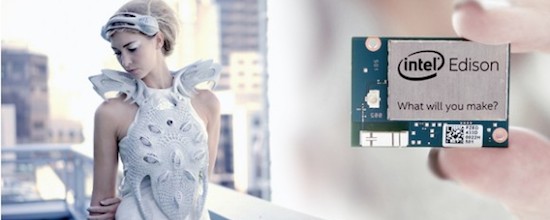
A 3D-Printed Mood-Logging Tech Dress: Anouk Wipprecht’s Wearables Just Got Smarter
Changing your appearance with your mood is a topic that’s no longer reserved for New Age followers or sci-fi fans. By embedding Intel’s super versatile, small-in-size-but-large-in-processing-capacity micro-controller called “Intel Edison”, Anouk Wipprecht created “Synapse”, a smart dress based on bio-sensors that takes user experience to the next level, as it acts on the wearer’s behalf!
Take a moment to imagine the possibility of the clothes you wear communicating changes in your mood, not only to others, but also giving the wearer better knowledge on her own fluctuations in attention and (dis)stress level; basically functioning as a learning system.
Dutch high-tech fashion designer, Anouk Wipprecht — a name you may recognize from her “Smoke Dress”, Cirque du Soleil pieces, and a recent Open Source Particle dress — is known for creating electronic couture that intersects fashion design with engineering. She is particularly interested in interactive design and sensors, and with her new work, she dove even further into the world of user experience design and body sensor networks.

Photo credit: Jason Perry
How did Anouk pull this off?
By flawlessly blending the newest technological developments with her sophisticated fashion sense, her “Synapse Dress” is powered by Intel’s newly launched “Intel Edison” microcontroller and was designed in collaboration with Niccolo Casas. The dress was then 3D printed by i.materialise’s parent company Materialise, in the fully-flexible TPU 92A-1 (Rubber Like‘s technical name), a material Anouk is pretty familiar with at this point.
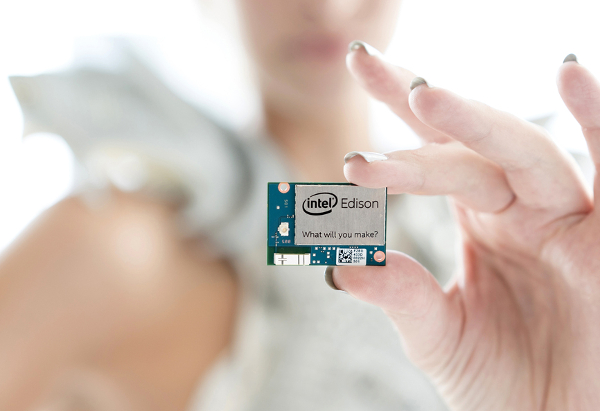
“Intel Edison,” a microcontroller that powers Anouk’s Synapse Dress. Photo credit: Jason Perry
The Synapse dress was revealed on September 9th at Intel’s Development Forum and was made in collaboration with Intel’s New Devices Group. It marks Anouk’s first attempt to embed Intel Edison into a sensing garment, and has given truly spectacular results!
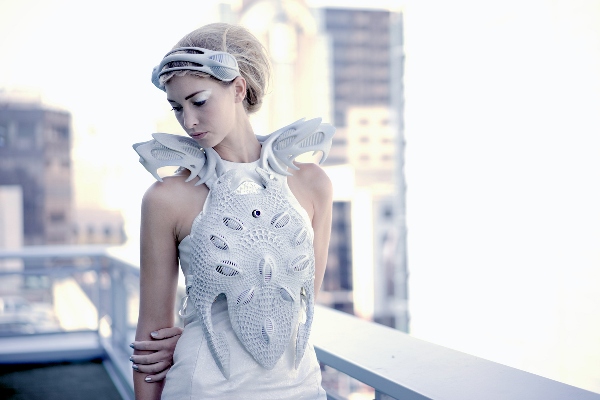
Photo credit: Jason Perry
The Intel-Edison-powered dress logs your own actions and makes you and others understand when something within yourself or within your immediate environment captures your attention or gives you stress. Unlocking the potential for social, emotional, and even “therapeutic” ways we can merge electronic fashion with body sensing networks and learning systems, this dress defines and uncovers new ways to explore and interact with the world around us.
The dress’s headpiece is fitted with a sensor that tracks the wearer’s attention level and focus to monitor fluctuations in the wearer’s “internal” mode — where attention level is usually high (around 80%). This functions internally to train your attention span, but also communicates externally by telling others that you are in a high state of focus and “do not disturb” while concentrating on a difficult task.

Photo credit: Margo Mortitz
One of the other sensors embedded in the dress monitors proximity: if the wearer feels like someone is invading her personal space, the lights in the dress can give off up to 120 watts of brightness, telling the other person to back off. The dress has a camera on the front that can capture a picture whenever the subject feels either most tense or most relaxed so she can later track what was making her feel that way. In short, it’s a dress with a lot of on-board hardware that challenges the body.
Thanks to these new technologies, the designer can now easily compute with a whole set of complicated hardware. Anouk’s previous innovations for wearable technologies brought her to a great height; but with the use of her recent technology, body-activated interactions can also flourish. She is super excited about new finds that give depth to her design process.
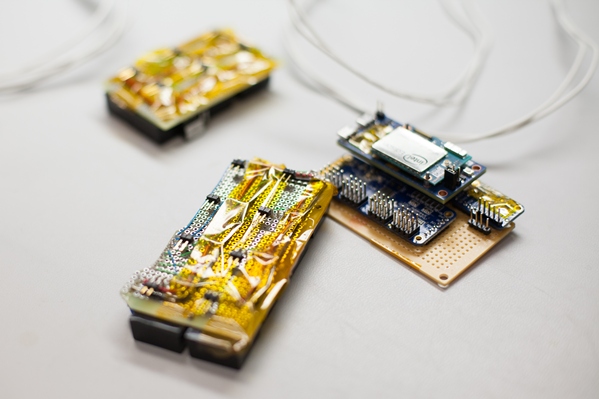
Photo caption: Margo Mortitz
“I cherish all new technologies; for example, Intel Edison allows me to integrate a super small piece of technology which can quickly compute complicated sets of signals, optional store and interconnect wirelessly to a lot of input data at once in an more advanced and more intelligent way. With digital design and manufacturing processes like 3D printing at Materialise for example, I can seamlessly create a garment, that rolls out of the machine, that I can directly embed, code, program and test out to be worn a few hours later. It simplifies certain things (manufacturing process), and deepens others (design process). At this point in time we stop ‘crafting’ fashion — but instead, ‘engineer’ your garment extensively.” – Anouk Wipprecht
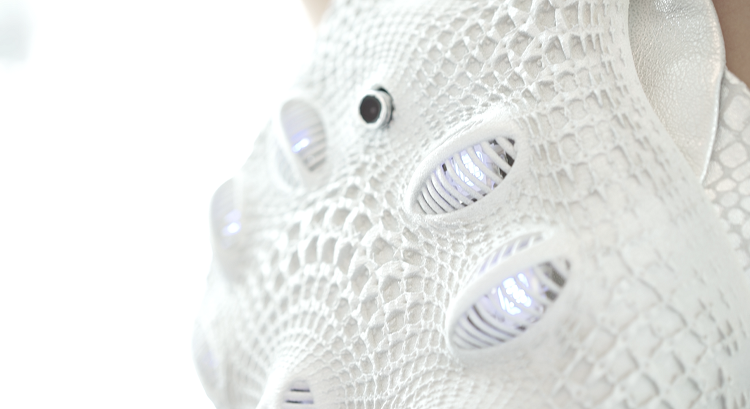
“Synapse Dress” up close.
Want to see more? We ranked Anouk’s top 5 3D-printed dresses here. Would you like to print your own fashion project? Upload your design here and choose from 100+ materials and finishes!
Recommended Articles
No related posts.


